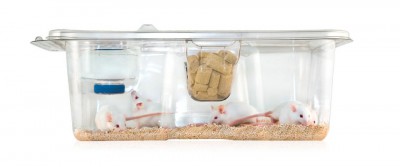Animal watering solutions

Animal watering is done using either drinking bottles placed in each cage, or an automatic watering system. The US National Research Council Guide for the Care and
Use of Laboratory Animals is recognized in many countries as the standard for quality animal care and use.
Challenges and requirement
- Organics
Some organics, such as pesticides, endocrine disrupters, etc. which may be present in tap water, can affect the health of laboratory animals and interfere with the research being conducted. In addition, in the presence of chlorine, organics may form disinfection by-products (DBP), some of which are thought to be carcinogenic
or affect reproduction.
- Bacteria
Bacteria can cause serious health problems to the animals and are a main concern in animal facilities. Immuno-compromised and transgenic animals are especially sensitive to bacterial contamination. Pseudomonas aeruginosa, for example, is an opportunistic pathogen commonly found in water, and may affect the health of vulnerable animals.
- Heavy metals
High levels of heavy metals (copper, iron, zinc, lead …) can be toxic for health-compromised animals. These metals can be leached from piping. Ions and metals present in water can be greatly removed by reverse osmosis.
- Hardness and particles
Hard water deposits and particles can damage the valves of automated watering systems, and cause leaks inside the animal cages. They will also increase the need for system maintenance.
Features
- Animals have access to clean, fresh water on demand – 24 hours a day, 7 days a week.
- Saves time and labor by reducing or eliminating your reliance on water bottles, allowing you to utilize staff in smarter ways.
- Reservoirs are designed with smooth sides and vented filtration maintain no dead legs or places for bacteria to hide.
- Complete monitoring of the automated watering system verifies performance and keeps all parameters under control, safeguarding your research animals and studies.


 沪公网安备31011802003750号
沪公网安备31011802003750号